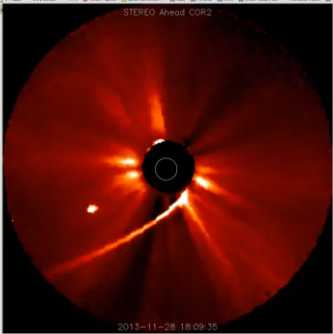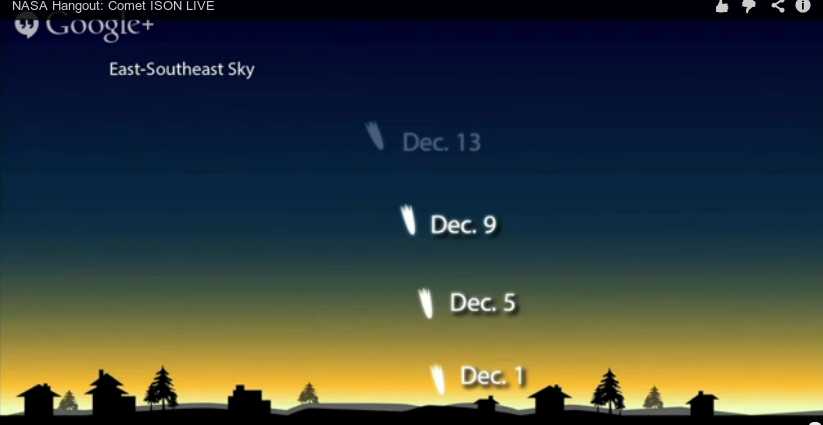
<
It looks like comet ISON has broken up.
I’m disappointed, but I’m not surprised. The comet’s closest approach was just 1,165,000 km (724,000 mi) from the surface of the sun. This is not a safe place for a snowball.
The image above shows just how close it got. The black disc in the centre of the picture is called a cronograph. It covers up the sun so that you can see less-bright things nearby.
ISON formed some 4,500,000,000 million years ago with the rest of the Solar System. As far as we can tell, it’s spent all that time a very long way from the sun in the Oort cloud where it’s cold. Then gravitational nudges sent it falling into the inner Solar System. As it got closer to the sun, it warmed up of course, and the various ices started to boil off. That’s what forms the part you see – the original snowball of ISON was only ever 2 km across.
If NASA are wrong about this, and the comet has survived, it will put on a marvellous show in December, because it’ll be close to the Earth. I hope so – I got up early three times to try to see the comet, and every time there was one small cloud in front of it. I did at least get a nice view of Mercury and Saturn.

